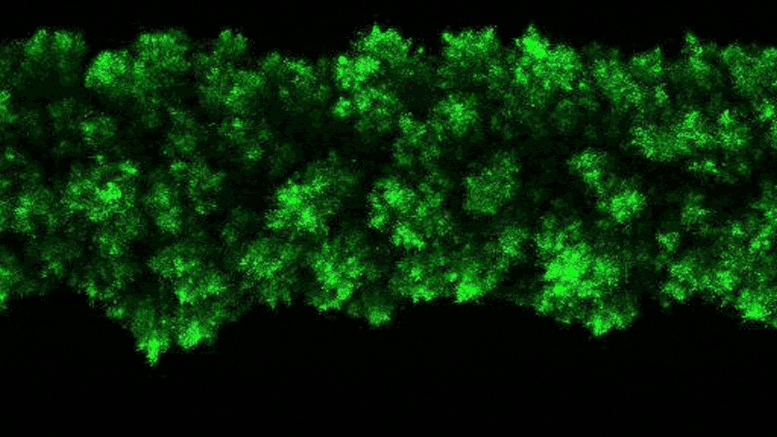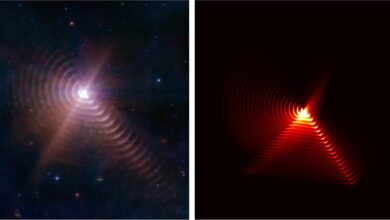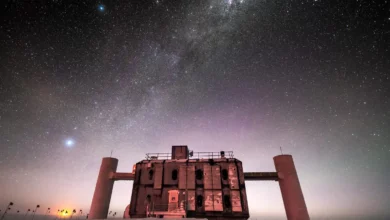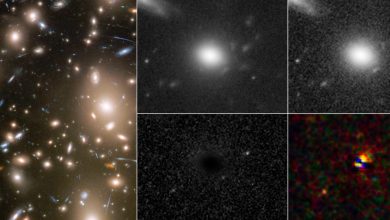Latest Articles
-
Nov- 2022 -19 NovemberDisease

300 Years of Research: Princeton Scientists Solve a Bacterial Mystery
Lead Image: The researchers were able to observe bacterial colonies’ clumpy growth in three dimensions. Credit: Neil Adelantar/Princeton University Researchers found that bacteria colonies form in three dimensions in rough shapes similar to crystals. Bacterial colonies often grow in streaks on Petri dishes in laboratories, but no one has understood how the colonies arrange themselves in more realistic three-dimensional (3-D) environments, such as tissues and gels in human bodies or soils and sediments in the environment, until now. This knowledge could be important for advancing environmental and medical research. A Princeton University team has now developed a method for observing…
Read More » -
19 NovemberAstronomy

Baffling “Spiderweb” Star Discovered – Is It an Alien Megastructure?
JWST image vs model of WR140. Credit: Left image: NASA/ESA/CSA/STScI/JPL-Caltech. Right image: Yinuo Han/Peter Tuthill/Ryan Lau A puzzling image captured by the James Webb Telescope explained. A strange image of the distant star WR140 surrounded by concentric geometric ripples captured by the James Webb Space Telescope (JWST) in July has perplexed astronomers around the world, even sparking frenzied internet speculation that it could be evidence of an alien megastructure light-years across. The perplexing picture was captured soon after JWST began scientific operations and published its first full batch of images. It rapidly sparked a heated debate on the internet, with…
Read More » -
17 NovemberAstronomy

“Ghost” Particles Detected Emanating From Galactic Neighbor With a Gigantic Black Hole
The IceCube Lab sits atop a 1-billion-ton network of sensing equipment and ice at the South Pole. Using the powerful neutrino telescope, researchers have identified a new source of astrophysical neutrinos coming from the galaxy NGC 1068. Credit: Martin Wolf, IceCube/NSF On Earth, trillions of subatomic particles called neutrinos stream through our bodies every second, but we never notice because they rarely interact with matter. In fact, because they so rarely interact with other matter, neutrinos can travel straight paths over vast distances unimpeded, carrying information about their cosmic origins. Although most of these aptly named “ghost” particles detected on…
Read More » -
16 NovemberBusiness

Detecting and Preventing Fraud in Your Business
Fraud affects business revenues and assets every year. Read this guide to learn how you can prevent it.
Read More » -
15 NovemberAstronomy

Secrets of an Earlier Universe: Hubble Captures Red Supergiant Supernova From 11 Billion Years Ago
Lead Image: Through a phenomenon called gravitational lensing, three different moments in a far-off supernova explosion were captured in a single snapshot by NASA’s Hubble Space Telescope. The light from the supernova, which was located behind the galaxy cluster Abell 370, was multiply lensed by the cluster’s immense gravity. Credit: NASA, ESA, STScI, Wenlei Chen (UMN), Patrick Kelly (UMN), Hubble Frontier Fields Blast from the Past Caught in Episodes Due to Gravitational Lensing Light from a star that exploded over 11 billion years ago was captured by the Hubble Space Telescope. It was not just one postcard from the remote…
Read More »










